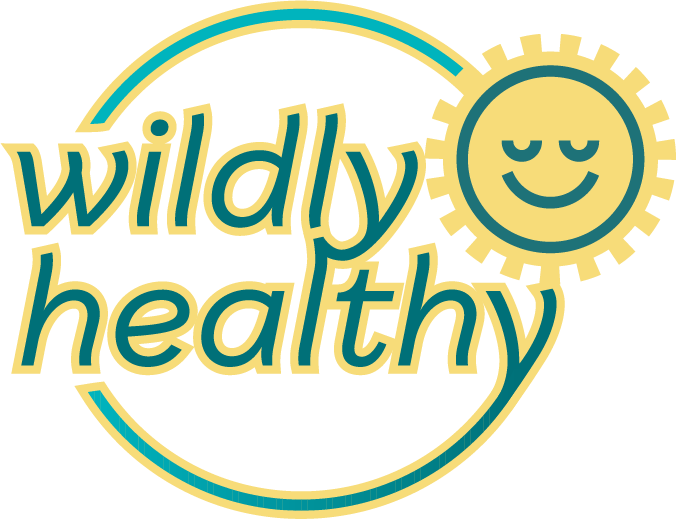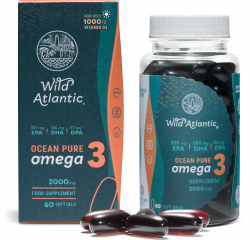Menopause is simply a pause for some of us in our 40s and 50s. For others, it’s a giant full stop! As our bodies undergo massive changes, our youthful health and well-being can often take a sudden plunge. However, women’s experience in different parts of the world can vary hugely. In Japan, even the word for menopause has a radically different meaning. Menopause is regarded as a normal part of life in Japan, and the word for it, konenki, literally translates to “renewal,” “season,” and “energy.”
Only 25-30% of Japanese women suffer from hot flushes (a rise in temperature caused by falling estrogen levels), compared to approximately 80% of women in the UK.
Our nutrition is critical during the peri-menopause and menopause stages of life. There is certainly a growing body of evidence to suggest that the Japanese diet, which is high in Omega-3, correlates with less severe menopause symptoms.
Oily fish is also a huge part of the Japanese diet, with women consuming an average of 100g of oily fish per day, whereas many of us in Ireland don’t eat fish or struggle to meet the minimum recommended weekly intake of oily fish of 280g per week!


The high concentration of Omega-3 fatty acids in oily fish makes it a popular food for health-conscious people. A nutritional study has found that Japanese women consume 1,300mg of Omega-3 per day, while the average consumption in Europe is around 200mg.
How do you know if you’re getting enough Omega-3?
Testing your Omega-3 levels is the best way to understand what’s going on in your body and detect silent inflammation, a major driver of several chronic health conditions. The Omega-3 Index test is the gold standard for measuring the amount of EPA and DHA in your red blood cell membranes. It is a simple Home Test that can be used to determine whether or not a person is getting enough Omega-3 fatty acids. Knowing your Omega-3 index can assist you in determining your cardiovascular disease risk. If your level is below optimal, you may want to consider eating more seafood on a regular basis or taking a high-quality Omega-3 supplement at a high dose.
What is a good Omega-3 index level?
Supplementation is required, according to University College Dublin research, to achieve an Omega-3 Index level of 8% based on our typical consumption levels of oily fish in Ireland.
However, most people tend to be lower than 6% and those eating a high processed food diet with very little fish or supplementation are typically lower than 4% – which is the high-risk zone when it comes to cardiovascular disease and sudden death.
The test can be taken via a simple finger-prick test done in the comfort of your own home and is then processed by accredited laboratories, with results and recommendations coming back on your mobile phone. No more telephone tennis trying to get an appointment with your GP.
Knowing your Omega-3 levels gives one a baseline to improve and protect your health. A low Omega-3 index means an increased risk of major depression in adults and adolescents whereas higher levels can help with staying mentally fit and sharp.
What should you look for in an Omega-3 supplement?
With so many options on the shelves to bamboozle you, knowing which Omega-3 supplement is best can be difficult. Here are 7 things to check when buying an Omega-3 supplement.
- Read the back of the label and check that the supplement is sourced from small oily fish like anchovy. The lower down the food chain, the lower the contamination.
- Look for a brand that has the purest R-triglyceride form vs ethyl ester of phospholipid form. The more natural it is, the more easily it is absorbed.
- Ideally, you should look for an Omega with a 2000mg dose per day.
- Ensure the supplement has high levels of EPA and DHA, which are very important for heart and brain health. Most Omega 3 supplements are only 18% EPA and 12% DPA – be sure to look for products with the highest concentrations at 80% plus.
- Importantly also look for DPA, which helps to conserve and rebalance the ratio of Omega-3 to Omega-6, which lowers inflammation in the body.
- The sustainability of both ingredients and packaging is worth consideration. Look for FOTS (Friends of the Sea) and IFOS International Fish Oil Standards) certification.
- Look for extras that make the Omega-3 better & different and offer good value for money.
What else can I do to help my menopause symptoms?
While taking natural menopause supplements is a good place to start, Omega-3 should only be part of a larger lifestyle change. If you suffer from hot flushes, identifying and avoiding common triggers (such as caffeine, alcohol, and sugar) can be beneficial, as can increasing the levels of estrogen-balancing lignans and flavonoids in your diet by eating more soy, chickpeas, and flax.

Exercise has also been shown to improve sleep, boost mood, and lower your osteoporosis and heart disease risk. Impact exercises, such as running or weight resistance or lifting, are especially beneficial for bone strength.
With growing awareness of menopause and its symptoms, as well as advocacy around access to HRT, workplace awareness, and better training for GPs, the future is brighter for those of us entering this season of renewal in our lives.





























